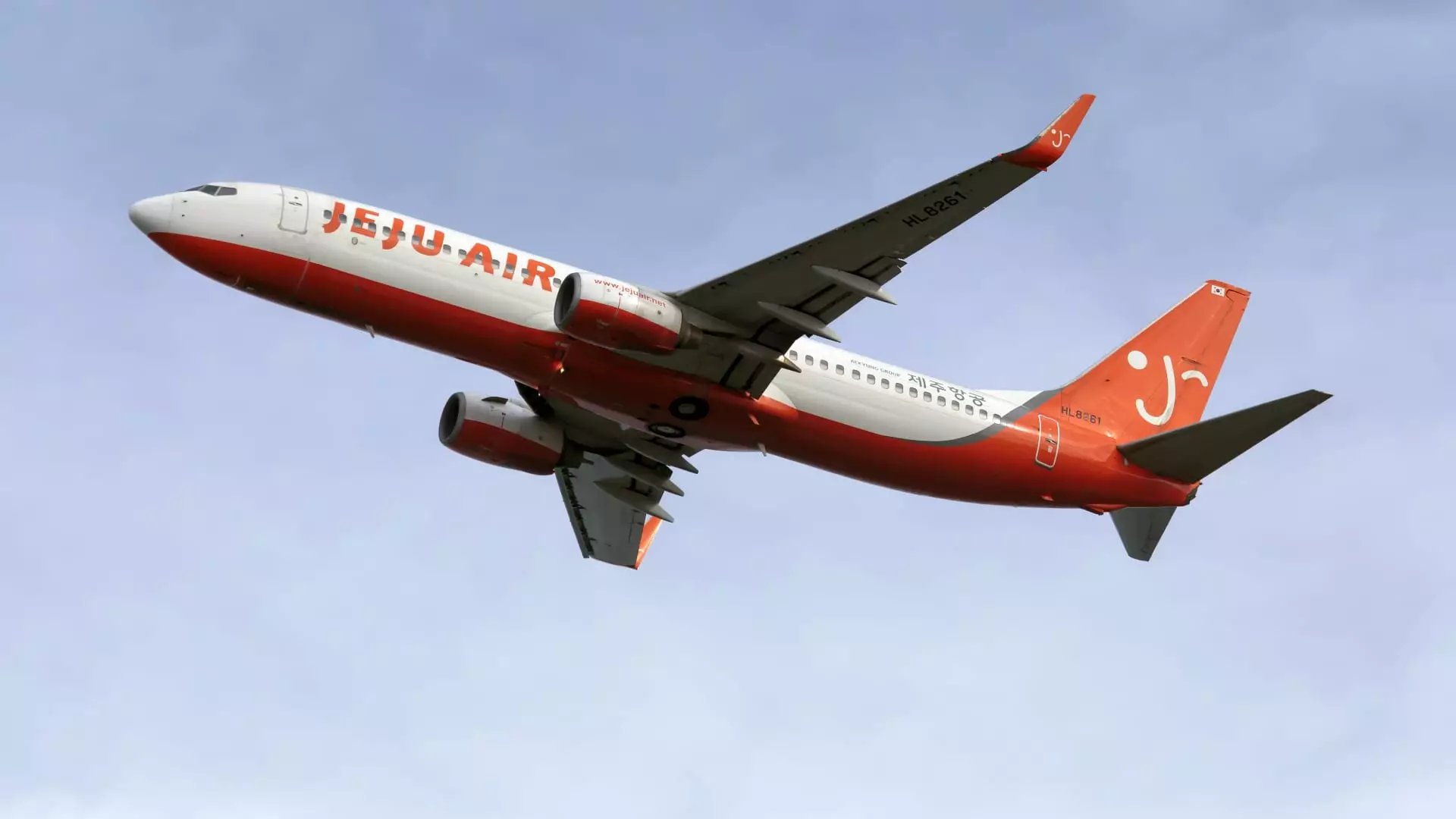On a fateful day, the aviation community was shaken by a catastrophic incident involving a Jeju Air flight that dramatically belly-landed at Muan International Airport, South Korea. The tragedy struck with devastating force: two of the 181 individuals onboard lost their lives, while others sustained severe injuries. This incident marked a somber chapter in South Korea’s aviation history, standing as the most dreadful accident in decades. As investigators delve into the underlying causes of this calamity, questions loom large about the integrity of a well-known aircraft model—the Boeing 737-800.
The Boeing 737-800 has earned its reputation as one of the world’s most widely used commercial aircraft, lauded for its safety record and reliability. It represents about 17% of the global commercial jet fleet, with approximately 4,400 of these aircraft in operation, according to aviation data sources. Despite its widespread use, the incident raises critical concerns regarding the aircraft’s ability to withstand unforeseen circumstances, especially given its age. The specific aircraft involved in the accident was around 15 years old, having initially been delivered to Ryanair before entering service with Jeju Air in 2017.
Despite the aircraft’s impressive service history, the devastating crash has reignited discussions about the maintenance protocols and safety measures surrounding older planes. According to aerospace experts, although the likelihood of discovering a design flaw in such a time-tested model is minimal, the reliability of pre-emptive checks and maintenance may be brought into question. Richard Aboulafia, a managing director at AeroDynamic Advisory, emphasized that the prospect of finding a design flaw is nearly inconceivable, suggesting that human error or other unexpected factors may have contributed to the tragic event.
In the wake of the disaster, South Korea’s acting President Choi Sang-mok has ordered a comprehensive inspection of all Boeing 737-800 aircraft operating in the country. This emergency review reflects the severity of the incident while highlighting the need for immediate reassessment of the safety regulations governing such widely used models. Investigators are left grappling with numerous unanswered questions, such as the inexplicable failure of the landing gear not to deploy during landing procedures.
Experts have posited various theories, with one speculating a potential bird strike that could have incapacitated the engines at a critical moment. Former safety investigator Jeff Guzzetti asserted that if the aircraft faced such an emergency, the rapid descent might have prevented the timely execution of emergency procedures. The complexity of aircraft systems combines with possible human oversight to create a precarious situation, emphasizing the need for effective training and protocol reinforcement for pilots.
The investigation’s complexity is further accentuated by the involvement of multiple stakeholders, including the National Transportation Safety Board (NTSB) from the United States, Boeing, and the Federal Aviation Administration (FAA). While South Korea is tasked with leading the investigation due to the localized nature of the accident, the U.S. entities bring valuable expertise, given that the aircraft was manufactured and certified in the United States. This collaborative approach aims to piece together the puzzle of this unfortunate incident, providing insights that could ultimately enhance aviation safety standards.
The Muan International Airport disaster serves as a grim reminder of the inherent risks associated with air travel, despite advancements in technology and safety protocols. The aviation industry must take this moment to reflect on existing regulations, maintenance protocols, and pilot training programs to mitigate the occurrence of such tragic events in the future.
As investigations unfold and answers emerge, the broader community must prepare to learn from this stark tragedy in order to pave the way for safer skies. While the Boeing 737-800 has a strong track record, this incident underscores the importance of vigilance and adaptation in maintaining airline safety standards. Only through rigorous scrutiny and a commitment to improvement can the aviation community aim to restore trust and safety in air travel amidst such harrowing events.



Leave a Reply